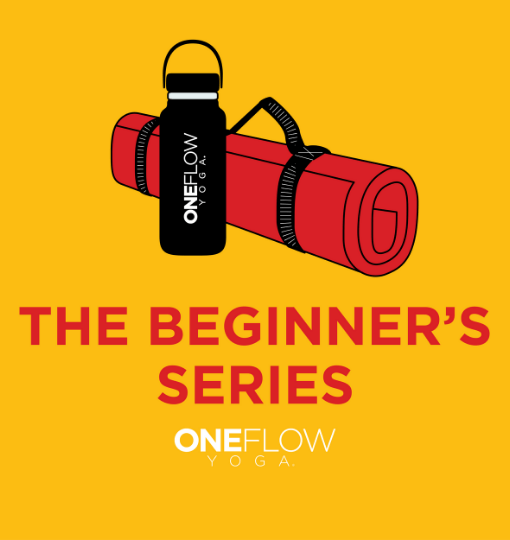When you have lower back pain, you want to get rid of it fast, but should you use yoga?
Yes, yoga is a highly effective treatment for lower back pain. It is great for beginners, is drug-free, and works as well as physical therapy. Plus, it’s recommended by The American College of Physicians.
Back pain is a HUGE problem and one of the most common reasons people go to the doctor in the U.S. and why they miss work. But after reading this, you’ll understand why it occurs, how to prevent it, and the best way to use yoga for lower back pain.
Benefits of Yoga for Back Pain
You may be wondering why you might choose yoga over other types of treatment. Here are the benefits of yoga for lower back pain.
- Safe and Effective
- Great for beginners and experienced practitioners
- Whole Body Workout
- Less risk of injury
- Drug-Free
- Prevention
Safe and Effective
By far, the biggest concern of any treatment is, “Does it work.” Yoga has been shown to work as well as other standard treatments for easing the pain.
Great for beginners and experienced practitioners
Yoga is perfect for beginners because you can start with very simple, easy to learn movements. And it scales, meaning that as you get better, there will be more to challenge you. Set yourself up for success by choosing a class that is labeled as “beginner-friendly” or “Level 1.”
Whole Body Workout
We treat the body as if it’s a bunch of individual parts. And that’s a mistake if you focus only on one area, like your back, but neglect the rest of you. Yoga counteracts this because it is a whole-body exercise. Because the reality is other parts of your body may be affecting your lower back too.
Less Risk of Injury
Being new to yoga can be an advantage. Why? Because the tightness, inflexibility, and stiffness that you worry will hold you back also help prevent injury. If you can’t move or stretch easily, what we call mobility, then there is less chance of you taking a pose to an extreme and getting hurt.
Drug-Free
Yoga is considered an alternate therapy to more conventional treatments like surgery and prescription painkillers. Alternative, though, doesn’t mean less effective, especially when it comes to alleviating the causes of back pain. By contrast, pain killers only address symptoms.
Prevention
Yoga can not only soothe your current lower back pain but also helps to prevent future incidents. It does this by addressing the causes and consequences of your current predicament.
Why Do People Have Lower Back Pain
To move towards prevention, it helps to understand what puts you at risk of having lower back pain in the first place.
Age
Back pain is common as you get older–starting at age 30. If that seems shocking, it may be tied to the next two influences.
Excessive Weight
Your skeletal frame is built to carry a certain amount of weight. When you go beyond that limit, it puts a strain on your entire body, including your back.
Lack of Exercise
This is the biggest issue of all–we don’t move. And inactivity can lead to excessive weight and a lack of strength. We are weak, and that includes weakness in our backs.
The 3 Ways to Prevent Lower Back Pain
If lack of exercise is the biggest culprit behind back pain, then movement is the anecdote. We need to build strength, enhance flexibility and maintain a healthy weight.
From Weak to Strong
The Centers for Disease Control considers yoga a “multicomponent physical activity,” meaning it’s great for cardio, develops strength and flexibility, and improves balance.
Though we don’t often think of it this way, yoga is a strength-building exercise that can make your back stronger.
Often a student will come to class and say the movements I teach are similar to what their physical therapist has them do. That’s by design because I’m always trying to help people balance their bodies.
But you need more than strength to help your back–you need flexibility. For example, your lower back pain may be because your upper back cannot extend–bend backward. This is from sitting during the day in a state of flexion, which is rounding your body forward like the letter C.
Because your upper back cannot bend backward, you have no choice but to get the movement where it is easiest, which is your lower back. But that puts way too much stress on it, which can lead to pain.
To fix this, you need to strengthen your entire back and restore its ability to bend backward once more.

Yoga, Physical Therapy and Pain Killers
In recent years doctors have shifted their mindset, helping people manage their pain by other means instead of choosing pills and painkillers for back discomfort.
This is partly because of the addictive nature of some of the most potent pain medicine and the realization that we need to treat the underlying causes.
Physical therapy, the prevailing referral by physicians for people who have back pain, is effective but can be expensive.
However, a recent study found that yoga was “as safe and effective as physical therapy in easing back pain.”
That’s good news because yoga is more widely available and doesn’t require an appointment. The study also stated,
The yoga and physical therapy groups showed almost the same amount of improvement in pain and activity limitation over time.
Annals of Internal Medicine
The study took an entire year, with the gains holding at 52 weeks.
There was also a finding on the use of pain meds. Both the yoga and the physical therapy study groups were less likely to use pain medication compared to a third group that received only education.
How to Use Yoga for Lower Back Pain
It’s always wise to consult and question your health provider before engaging in any exercise program, such as yoga for lower back pain.
If you’re a beginner, you can still do yoga. Just take it slowly.
First, we need to sort out differences in back pain.
Differences in Back pain
Yoga is recommended for ordinary, “achy back” pain that can be described as mild to moderate.
Yoga works well for the majority of back pain that is muscular in nature.
However, if you have chronic low back pain, or any injury, such as a spinal fracture or herniated disk, or diagnosed problem, then you might want to avoid yoga. This is also true if your pain radiates down your leg, causing numbness.
Again, when in doubt, talk to your doctor.
Yoga Recommended by Doctors
After you see your doctor, you may find they are a big fan of yoga. The American College of Physicians has given a strong recommendation for yoga.
“For patients with chronic low back pain,” doctors and patients should select non-drug treatment, such as “yoga.”
This comes from their guidelines to “provide treatment guidance based on efficacy” or how effective a treatment is. They wrote the scientific, evidence-based guide to help doctors and patients alike. A strong recommendation is where the benefits have to “clearly outweigh risks.”
The researchers reviewed 150 studies to make their recommendations, with an eye on “what works and what doesn’t when it comes to lower back pain.”
And clearly, yoga works.
5 Factors To Focus on When Using Yoga
These 5 factors will help maximize your benefits from yoga.
1. Follow proper form and speed.
We get that you’re excited to banish your back pain but go slow. According to Dr. Lauren Elson, an instructor in medicine at Harvard Medical School, the main issue when using yoga for back injuries is people don’t follow proper form and speed. “They quickly ‘drop’ into a yoga pose without gradually ‘lengthening’ into it.” This can make your back pain worse. The solution, slow down, start with the basics, and build strength over time.
2. Bring consciousness to movement.
Vinyasa, the most popular type of yoga, means to place in a special way. Yoga is deliberate and brings a sense of attention and awareness to our actions. If you do that, it will keep you safer.
3. Strength and Stretch
Recall that yoga can be used to develop strength and flexibility. Whenever you are doing yoga poses, aim to feel both strength and stretch to prevent overdoing it. The work should be challenging and require muscular effort.
4. Where are you moving from
There are many ways to get movement in yoga. A yoga teacher might suggest bringing your forehead toward your shin. You can do this by moving your hips or by rounding your spine. One of those will be better for your back, so keep asking yourself if where you are getting the movement from is helpful.
5. Honor your boundaries
This is a big one whether you have pain and injury or not. Listen to your body’s sensations to see if they are telling you to keep going or stop.
Other considerations:
Be sure to warm up and cool down, at least 10 minutes when you are practicing yoga.
Use tools such as yoga blocks to make the poses more accessible.
Yoga can be a powerful treatment for your lower back pain and help you maintain your optimum health. By keeping these factors in mind, you’ll get stronger and prevent the next bout of back pain.



